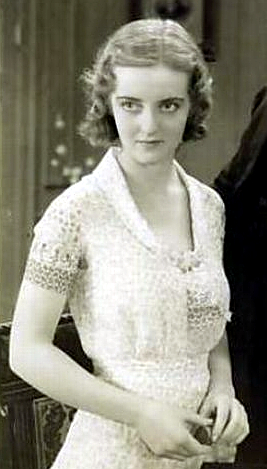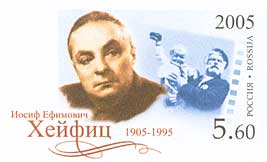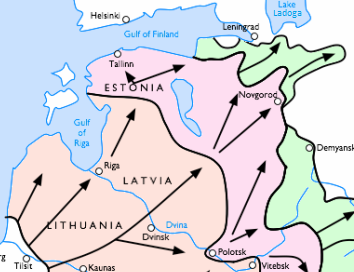|
Lenfilm
Lenfilm (, acronym of Leningrad Films) is a Russian production and distribution company with its own film studio located in Saint Petersburg (the city was called Leningrad from 1924 to 1991, thus the name). It is a corporation with its stakes shared between private owners and several private film studios which operate on the premises. Since October 2012, the Chairman of the board of directors is Fyodor Bondarchuk. History Before Lenfilm St. Petersburg was home to several Russian and French film studios since the early 1900s. In 1908, St. Petersburg businessman Vladislav Karpinsky opened his film factory Omnium Film, which produced documentaries and feature films for local theatres. During the 1910s, one of the most active private film studios was Neptun in St. Petersburg, where such figures as Vladimir Mayakovsky and Lilya Brik made their first silent films, released in 1917 and 1918. Lenfilm's property was originally under the private ownership of the ''Aquarium'' garden ... [...More Info...] [...Related Items...] OR: [Wikipedia] [Google] [Baidu] [Amazon] |
Fyodor Bondarchuk
Fyodor Sergeyevich Bondarchuk ( ; born 9 May 1967) is a Russian film director, actor, producer and TV host. He is also the founder of Art Pictures Studio, a production company. He specializes in action movies, war movies, and science fiction films. Some of his most notable films include '' The 9th Company'' (2005), '' Dark Planet'' (2008–2009), ''Stalingrad'' (2013) and '' Attraction'' (2017). As an actor, Bondarchuk is best known for starring in '' 8 ½ $'' (1999), ''Down House'' (2001), '' Two Days'' (2011), '' The PyraMMMid'' (2011) and ''Ghost'' (2015). He is a winner of TEFI award in 2003 in nomination “The best host of the entertainment TV-show”. He is a two-time winner of the Golden Eagle Award: as the Best Actor in a movie ''Two Days'' by Avdotya Smirnova (2011) and as the Best Actor in the comedy ''Ghost'' produced by Alexander Voitinsky (2015). On 15 October 2012 he was appointed as chairman of Lenfilm's Board of directors. Early life Fyodor was born ... [...More Info...] [...Related Items...] OR: [Wikipedia] [Google] [Baidu] [Amazon] |
The Blue Bird (1976 Film)
''The Blue Bird'' is a 1976 American-Soviet children's fantasy film directed by George Cukor. The screenplay by Hugh Whitemore, Alfred Hayes, and Aleksei Kapler is based on the 1908 play '' L'Oiseau bleu'' by Maurice Maeterlinck. It was the fifth screen adaptation of the play, following two silent films, the studio's 1940 version starring Shirley Temple, and a 1970 animated feature. It was famous as one of the few cinematic co-productions between the United States and the Soviet Union during the Cold War. However, unlike prior adaptations, the film received little-to-no critical praise and was a flop at the box office. Plot Mytyl and her brother Tyltyl are peasant children who are led on a quest for the Blue Bird of Happiness by the Queen of Light. She gives them a hat with a magic diamond that allows them to call forth the souls of all things, both living and inanimate. On their journey, they are accompanied by the human personifications of a dog, a cat, water, sugar, bre ... [...More Info...] [...Related Items...] OR: [Wikipedia] [Google] [Baidu] [Amazon] |
George Cukor
George Dewey Cukor ( ; July 7, 1899 – January 24, 1983) was an American film director and film producer, producer. He mainly concentrated on comedies and literary adaptations. His career flourished at RKO Pictures, RKO when David O. Selznick, the studio's head of production, assigned Cukor to direct several of RKO's major films, including ''What Price Hollywood?'' (1932), ''A Bill of Divorcement (1932 film), A Bill of Divorcement'' (1932), ''Our Betters'' (1933), and ''Little Women (1933 film), Little Women'' (1933). When Selznick moved to Metro-Goldwyn-Mayer in 1933, Cukor followed and directed ''Dinner at Eight (1933 film), Dinner at Eight'' (1933) and ''David Copperfield (1935 film), David Copperfield'' (1935) for Selznick, and ''Romeo and Juliet (1936 film), Romeo and Juliet'' (1936) and ''Camille (1936 film), Camille'' (1936) for Irving Thalberg. He was replaced as one of the directors of ''Gone with the Wind (film), Gone with the Wind'' (1939), but he went on to dir ... [...More Info...] [...Related Items...] OR: [Wikipedia] [Google] [Baidu] [Amazon] |
Grigori Kozintsev
Grigori Mikhailovich Kozintsev (11 May 1973, born Grigori Moiseyevich Kozintsov) was a Soviet theatre and film director, screenwriter and pedagogue. He was named People's Artist of the USSR in 1964. In 1965 he was a member of the jury at the 4th Moscow International Film Festival. Two years later he was a member of the jury of the 5th Moscow International Film Festival. In 1971 he was the president of the jury at the 7th Moscow International Film Festival. Biography Grigori Kozintsev was born in the Jewish family of a doctor, therapist and pediatrician Moisei Isaakovich Kozintsov (1859–1930) and his wife Anna Grigorievna Lurie was from a rabbinical family from Kiev. His mother's sister was the gynecologist and scientist-physician . The mother's brother was the dermatologist Alexander G. Lurie (1868–1954), a professor and chair of venereal skin diseases at the Kiev Postgraduate Medical Institute (1919–1954). The parents were married in 1896 in Kiev; in the same year, a ... [...More Info...] [...Related Items...] OR: [Wikipedia] [Google] [Baidu] [Amazon] |
Iosif Kheifets
Iosif Yefimovich Kheifits (24 April 1995) was a Soviet film director, winner of two State Stalin Prize, Stalin Prizes (1941, 1946), People's Artist of USSR (1964), Hero of Socialist Labour (USSR), Hero of Socialist Labor (1975). Member of the Communist Party of Soviet Union since 1945. Life and career Kheifets was born 17 December 1905 in Minsk. In 1927 he graduated from the Leningrad Technical-Screen Art (present-day Saint Petersburg State Institute of Film and Television). In 1928, he graduated from the cinema faculty of . In 1928, Iosif Kheifets came to work at the film studio Sovkino (present-day Lenfilm, Lenfilm Studio). In film, he first made his debut as a screenwriter, with and Aleksandr Zarkhi he created the scripts for films ' and '. Then, Iosif Kheifits became a director, while from 1928 to 1950 he worked with Aleksandr Zarkhi, headed the 1st Komsomol stage brigade of Sovkino, releasing films on the Soviet youth: ''Wind in the Face'' (1930), ''Noon'' (1931), and the ... [...More Info...] [...Related Items...] OR: [Wikipedia] [Google] [Baidu] [Amazon] |
Saint Petersburg
Saint Petersburg, formerly known as Petrograd and later Leningrad, is the List of cities and towns in Russia by population, second-largest city in Russia after Moscow. It is situated on the Neva, River Neva, at the head of the Gulf of Finland on the Baltic Sea. The city had a population of 5,601,911 residents as of 2021, with more than 6.4 million people living in the Saint Petersburg metropolitan area, metropolitan area. Saint Petersburg is the List of European cities by population within city limits, fourth-most populous city in Europe, the List of cities and towns around the Baltic Sea, most populous city on the Baltic Sea, and the world's List of northernmost items#Cities and settlements, northernmost city of more than 1 million residents. As the former capital of the Russian Empire, and a Ports of the Baltic Sea, historically strategic port, it is governed as a Federal cities of Russia, federal city. The city was founded by Tsar Peter the Great on 27 May 1703 on the s ... [...More Info...] [...Related Items...] OR: [Wikipedia] [Google] [Baidu] [Amazon] |
Nikolai Akimov
Nikolay Pavlovich Akimov ( – 6 September 1968) was an experimental theatre director and scenic designer noted for his work with the Leningrad Comedy Theatre. His most notorious production was the cynical version of ''Hamlet'' (1932), with Ophelia as a drunken prostitute and the king's ghost as a clever mystification arranged by Hamlet. Akimov, who was the Comedy Theater director in 1935-1949 and 1956-1968, wrote several books, among them ''About Theater'' (О театре, 1962) and ''Not Just About Theater'' (Не только о театре, 1966), and was designated a People's Artist of the USSR in 1960. Akimov was director of the Lensovet Theatre, New Theatre in Leningrad in the early 1950s. The Saint Petersburg Comedy Theatre is named in his honour. [...More Info...] [...Related Items...] OR: [Wikipedia] [Google] [Baidu] [Amazon] |
Production Company
A production company, production house or production studio is a studio that creates works in the fields of performing arts, new media art, film, television show, television, radio, comics, interactive arts, video games, websites, music, and video. These groups consist of technical staff and members to produce the media, and are often incorporation (business), incorporated as a publishing, commercial publisher. Generally the term refers to all individuals responsible for the technical aspects of creating a particular product, regardless of where in the process their expertise is required, or how long they are involved in the project. For example, in a theatrical performance, the production team has not only the running crew, but also the theatrical producer, designers, and theatre director, theatrical direction. Tasks and functions The production company may be directly responsible for fundraising the production or may accomplish this through a parent company, partner, or priv ... [...More Info...] [...Related Items...] OR: [Wikipedia] [Google] [Baidu] [Amazon] |
Samarkand
Samarkand ( ; Uzbek language, Uzbek and Tajik language, Tajik: Самарқанд / Samarqand, ) is a city in southeastern Uzbekistan and among the List of oldest continuously inhabited cities, oldest continuously inhabited cities in Central Asia. Samarkand is the capital of the Samarkand Region and a district-level city, that includes the urban-type settlements Kimyogarlar, Farxod, Farhod and Xishrav, Khishrav. With 551,700 inhabitants (2021), it is the List of cities in Uzbekistan, third-largest city in Uzbekistan. There is evidence of human activity in the area of the city dating from the late Paleolithic Era. Though there is no direct evidence of when Samarkand was founded, several theories propose that it was founded between the 8th and 7th centuries BC. Prospering from its location on the Silk Road between East Asia, China, Persia and Europe, at times Samarkand was one of the largest cities in Central Asia,Guidebook of history of Samarkand", and was an important city of t ... [...More Info...] [...Related Items...] OR: [Wikipedia] [Google] [Baidu] [Amazon] |
Alma-Ata
Almaty, formerly Alma-Ata, is the largest city in Kazakhstan, with a population exceeding two million residents within its metropolitan area. Located in the foothills of the Trans-Ili Alatau mountains in southern Kazakhstan, near the border with Kyrgyzstan, Almaty stands as a pivotal center of culture, commerce, finance and innovation. The city is nestled at an elevation of 700–900 metres (2,300–3,000 feet), with the Big Almaty and Small Almaty rivers running through it, originating from the surrounding mountains and flowing into the plains. Almaty is the second-largest city in Central Asia and the fourth-largest in the Commonwealth of Independent States (CIS). Almaty served as the capital of Kazakhstan from 1929 to 1997 during the Soviet era and after independence from 1991 until the capital was relocated to Akmola (now Astana) in 1997. Despite no longer being the capital, Almaty remains the most cosmopolitan and influential city in Kazakhstan, often regarded as the nat ... [...More Info...] [...Related Items...] OR: [Wikipedia] [Google] [Baidu] [Amazon] |
Siege Of Leningrad
The siege of Leningrad was a Siege, military blockade undertaken by the Axis powers against the city of Leningrad (present-day Saint Petersburg) in the Soviet Union on the Eastern Front (World War II), Eastern Front of World War II from 1941 to 1944. Leningrad, the country's second largest city, was besieged by Nazi Germany, Germany and Finland for 872 days, but never captured. The siege was the List of sieges, most destructive in history and possibly the List of battles by casualties#Sieges and urban combat, most deadly, causing an estimated 1.5 million deaths, from a prewar population of 3.2 million. It was not classified as a war crime at the time, but some historians have since classified it as a genocide due to the intentional destruction of the city and the systematic starvation of its civilian population. p. 334 In August 1941, Nazi Germany, Germany's Army Group North reached the suburbs of Leningrad as Finnish forces moved to encircle the city from the north. Land ... [...More Info...] [...Related Items...] OR: [Wikipedia] [Google] [Baidu] [Amazon] |






